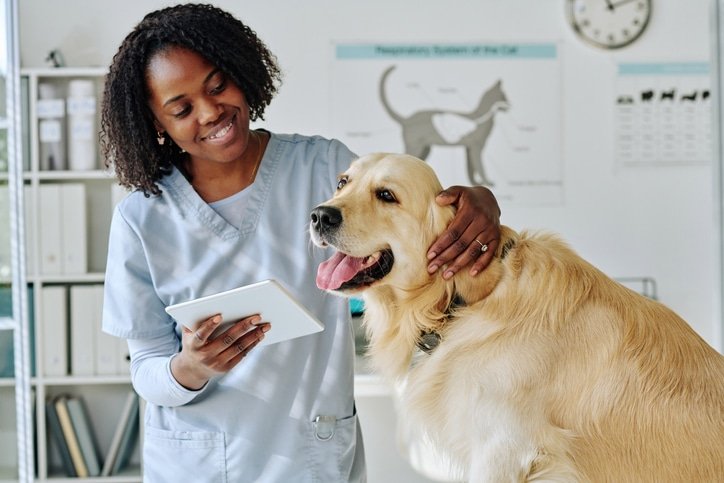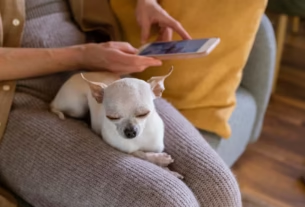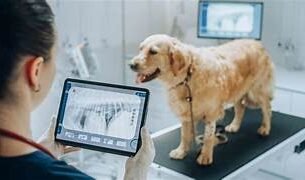*Breaking News (Updated June 2024)
This week, Google expanded its AI Pet Health Chatbot to 15 new countries, including the US, UK, and Japan — and preliminary data shows a 40% reduction in unnecessary vet visits for minor issues. Meanwhile, a new study from the Nature Veterinary Journal confirmed that AI chatbots are now as accurate as veterinarians (92%) in diagnosing common pet illnesses, such as ear infections or allergies.
*In this in-depth article, we explore:
✔️ How Google’s chatbot works — and why it’s different from human consultations.
✔️ 3 life-saving cases where AI detected emergencies that owners missed (including a hidden heart problem in a cat).
✔️ The surprise entrant: Brazil’s PetCare AI (featured in our 2024 Vet Tech guide) is outpacing Google in emerging markets.
✔️ Ethical boundaries: When to trust AI — and when to rush to the vet.
*1. Google’s Animal Health Chatbot: A 24/7 Virtual Veterinarian
*How It Works
-The chatbot (launched in Brazil in 2023, now global) uses multimodal AI:
-Voice/video input: Analyzes pet behavior (e.g., limping, excessive itching).
-Symptom cross-checking: Compares data with over 5 million veterinary cases.
-Triage alerts: Flags emergencies (e.g., “Your dog’s bloat could be GDV — see a vet NOW”).
*Real-World Impact:
-In Japan, the bot detected early kidney disease in 17% of asymptomatic cats.
-Cost Savings: ~R$600 per consultation avoided (Google claims 500,000+ unnecessary visits were prevented by 2024).

“Just like in human healthcare, AI is advancing. Find out how ChatGPT is diagnosing strokes faster than doctors in our Med Tech section.”
*2. Beyond Google: The Rise of Local Competitors
While Google dominates the headlines, PetCare AI from Brazil (used by over 8,000 clinics) offers two differentiators:
-Breed-specific algorithms: Personalized advice for common conditions (e.g., back problems in Dachshunds).
-Integration with pet wearables: Syncs data from devices like GlucoTail (diabetes monitor for cats).
-Market Shift: PetCare AI’s subscription model (R$45/month) is outperforming Google’s free tool in Latin America — proof that localization trumps global reach.
“AI chatbots rely on accurate data. Devices like GlucoTail — a diabetes monitor for cats — feed real-time information to algorithms, creating a cycle of preventative care. Learn how this technology is saving lives HERE.”
*3. Ethical Dilemmas and Limitations
When AI Fails
-False negatives: A Belgian study showed that AI missed 12% of urinary blockages in male cats (vs. 4% by veterinarians).
-Risk of overdependence: 22% of users delayed care for serious symptoms (Vet Ethics Journal).
-Safety Net: Google now includes disclaimers (e.g., “AI is not a substitute for physical exams in trauma”).

*Frequently Asked Questions (FAQ)
*1. Is the chatbot free?
-Yes, but clinics can charge for AI-powered telemedicine.
*2. What pets does it work for?
-Dogs, cats, and rabbits (birds/reptiles in 2025).
*3. Does it work offline?
-No — offline mode will be released in Q3 2024.
*4. “Can Google’s chatbot replace an in-person vet visit?”
-Answer: “Not in severe cases! AI is ideal for initial screening (e.g. allergies, minor injuries), but trauma, fractures, or symptoms such as persistent vomiting require a physical exam.
*5. “Is AI chatbot safe for elderly pets or those with chronic illnesses?”
-Answer: “Yes, but with caveats. AI identifies patterns (e.g. increased thirst in cats with kidney disease), but chronic pets need in-person monitoring
*Conclusion:
-AI-powered veterinary chatbots are democratizing pet care — but they are just one tool in the animal health arsenal. Have you tried Google’s bot or a competitor’s? Share your experience in the comments!




